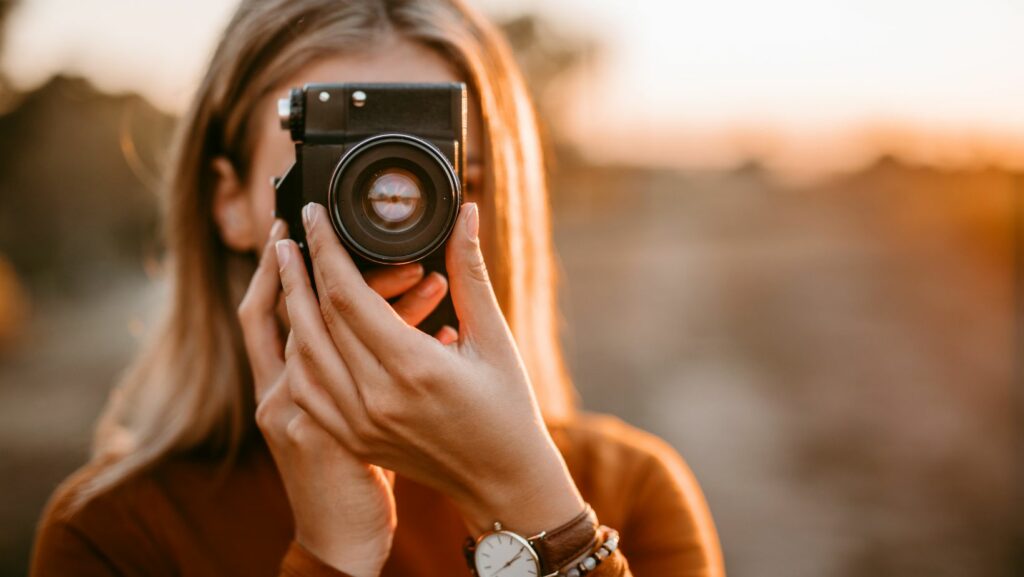In the world of photography, voyeuristic photography occupies a controversial yet undeniably captivating niche. It’s a genre that teases the boundaries between public and private, consent and intrusion, often sparking intense debate. This style captures candid moments without the subject’s awareness, providing a raw and unfiltered glimpse into real-life scenarios.
Voyeuristic Photography
The Definition of Voyeuristic Photography
 Voyeuristic photography captures images of people without their knowledge or consent, often in private or intimate situations. This genre, existing at the intersection of art and privacy invasion, thrives on the element of the unseen and the unpermitted. Photographers engaging in voyeuristic photography tread a fine line, aiming to reveal the unguarded moments of individuals, thereby invoking a sense of raw realism and emotional honesty in their work. However, it also raises significant ethical questions regarding privacy, consent, and the moral implications of capturing such moments. The essence of voyeuristic photography lies not just in the act of observing but in the subtle narrative it weaves through the lens, offering a glimpse into the hidden aspects of human behavior and societal norms.
Voyeuristic photography captures images of people without their knowledge or consent, often in private or intimate situations. This genre, existing at the intersection of art and privacy invasion, thrives on the element of the unseen and the unpermitted. Photographers engaging in voyeuristic photography tread a fine line, aiming to reveal the unguarded moments of individuals, thereby invoking a sense of raw realism and emotional honesty in their work. However, it also raises significant ethical questions regarding privacy, consent, and the moral implications of capturing such moments. The essence of voyeuristic photography lies not just in the act of observing but in the subtle narrative it weaves through the lens, offering a glimpse into the hidden aspects of human behavior and societal norms.
Voyeuristic Photography in History
Voyeuristic photography has navigated through history, mirroring societal changes and technological advancements. It emerged as a distinct genre when cameras became sufficiently portable to capture candid moments outside the constraints of a studio. Historical instances, dating back to the late 19th and early 20th centuries, show photographers employing discreet methods to snapshot the unaware, often in public spaces or through unobserved perspectives. This era set the foundation for the genre, blending curiosity with the art of observation. As society evolved, so did the discourse around voyeuristic photography, intersecting with issues of privacy, consent, and the ethics of observation. Through its history, this style of photography not only reveals hidden facets of human behavior but also reflects the ongoing dialogue about the boundaries between public and private lives in an increasingly surveilled world.
Technological Advances and Their Impact
 Technological advances have significantly impacted voyeuristic photography, making the capture of images without consent easier and more covert. As cameras have become smaller and more powerful, they’ve been embedded in various everyday devices, such as smartphones and wearable technology. This development has facilitated the rise of voyeuristic photography, as it allows individuals to take photos discreetly without drawing attention. Enhanced zoom capabilities and high-resolution imaging enable the capture of clear, detailed photos from greater distances, further complicating the ethical considerations of voyeuristic photography. These technological advancements challenge existing legal frameworks and societal norms, calling for a reevaluation of privacy rights and consent in the age of digital surveillance.
Technological advances have significantly impacted voyeuristic photography, making the capture of images without consent easier and more covert. As cameras have become smaller and more powerful, they’ve been embedded in various everyday devices, such as smartphones and wearable technology. This development has facilitated the rise of voyeuristic photography, as it allows individuals to take photos discreetly without drawing attention. Enhanced zoom capabilities and high-resolution imaging enable the capture of clear, detailed photos from greater distances, further complicating the ethical considerations of voyeuristic photography. These technological advancements challenge existing legal frameworks and societal norms, calling for a reevaluation of privacy rights and consent in the age of digital surveillance.
Voyeuristic Photography as Art
Exploring voyeuristic photography within the realm of art reveals its complex nature. Artists employing this genre push boundaries, creatively questioning societal norms and the perception of privacy. They transform ordinary moments into compelling narratives, focusing on the unguarded instances of human existence. This transformation elevates voyeuristic photography from mere observation to a profound commentary on the human condition. Through their lenses, photographers challenge viewers to reconsider their viewpoints on privacy, consent, and the omnipresent gaze in modern society. This artistic approach offers a unique perspective, illustrating the delicate balance between public observation and private lives, thereby enriching the discourse on voyeuristic photography’s role in contemporary art.
Handling Voyeuristic Photography
Voyeuristic photography stands at the crossroads of art, ethics, and privacy. Its evolution from a clandestine practice to a recognized art form forces society to confront uncomfortable truths about observation and consent. As technology continues to blur the lines between public and private spheres, the dialogue around voyeuristic photography becomes increasingly relevant. Artists leveraging this genre not only showcase their creative prowess but also spark crucial conversations about the boundaries of privacy in the digital era. They remind us that while voyeuristic photography can challenge and intrigue, it also demands a thoughtful consideration of ethical standards. In navigating the future of this complex genre, understanding its historical roots and artistic contributions is key to balancing the rights of the subject with the freedom of expression.


